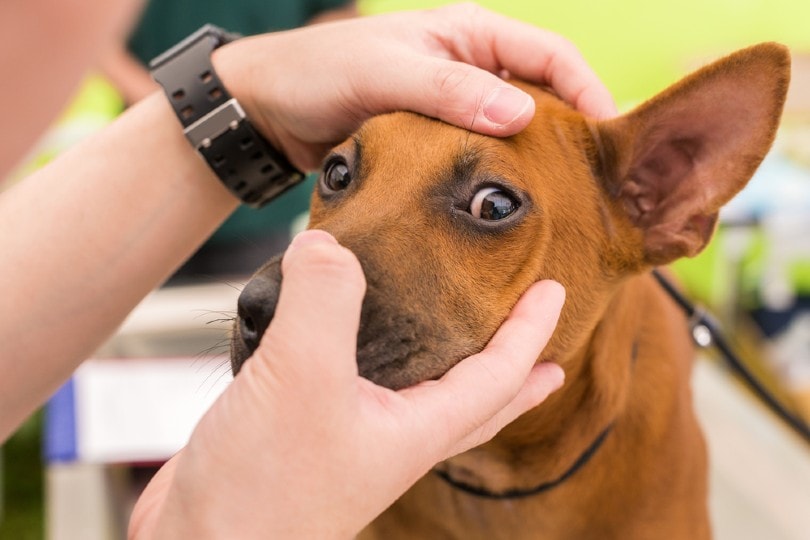
Dogs aren’t color blind in the sense that they don’t see color. They have a more limited range of color vision than humans do and see a different spectrum of colors. The canine color spectrum is limited to yellow, blue, and purple shades. Dogs can’t distinguish reds, oranges, or greens. These colors appear somewhere between yellow and blue for them.
How Color Vision Works in Dogs

To understand how dogs see color, you first need to understand how the eye works. The eyeball contains specialized receptors called rods and cones. Rods detect motion and light shades, while cones differentiate color.
People have three types of cones, and dogs have two. Each cone type is responsible for a different color combination: red, blue, and green. The cone cells in a dog’s eye are limited to yellow and blue.
This “two-colored” vision is called dichromatic vision.
How Color-Blindness Works
Color blindness describes the inability to differentiate between colors or see color. Abnormalities in cone receptors are the cause of this condition.
There are two types of color blindness in people: red-green color blindness and blue-yellow color blindness. Which type a person has depends on which cone receptors are affected. A person with red-green color blindness cannot differentiate between red and green, and both colors will look the same to them.
Since dogs have yellow-blue dichromatic vision, they see colors in a similar fashion as people who are red-green color blind. They are skilled at distinguishing between shades of blue and yellow but not red and green.

Dogs See Differently
Both dogs and humans have photoreceptors, rods, and cones in their retinas. The human eye has different types of cones, while the canine eye has more rods and no fovea, the part of the eye responsible for sharp visual details.
These physiological differences result in dogs having superior night vision and motion-tracking abilities, and humans see more colors and finer details than dogs.
What Colors Can Dogs See?
Dogs see the world through a unique color spectrum, with yellow and blue as the dominant colors. Blue, blue-green, purple, and yellow can be distinguished. Reds and greens most likely resemble shades of brown or grayscale to a dog.

What Color Means to Your Dog
Remember that bright red dog toy that you picked out? Or the orange ball your dog can’t ever find in the grass? Or how your dog doesn’t seem to like their lime-green bed? Their indifference is related to their limited color vision.
While bright, rainbow-colored dog toys, beds, and collars appeal to us, color isn’t likely to impact your dog’s preferences. So many dog toys are bright orange and red because the color appeals to humans. Since humans are the ones buying the toy, this is how dog items are marketed. Your dog sees that bright-red toy as a blob of brown.
You can use your newfound knowledge of your dog’s color vision to your advantage. Choosing balls or Frisbees that are blue or yellow will help your dog spot them faster in outdoor green grass. For agility sports, choose equipment in blue and yellow. It helps your dog see better, improve their ability to judge distances, and quickly adjust the course.
Final Thoughts: Are Dogs Color Blind?
While your dog can’t see the same color spectrum as you, they have superior low-light vision and can better detect motion and peripheral vision. While their vision isn’t as great as a human’s, dogs have adapted through their other senses. A dog’s senses of smell and hearing far exceed those of a human. This is why our dogs can “see” things we can’t. Now that you know what colors your dog does see, you can use this to your advantage by selecting toys in colors that they will recognize.
See Also:
Featured Image Credit: Alexas_fotos, Pixabay






